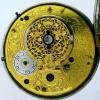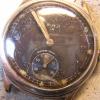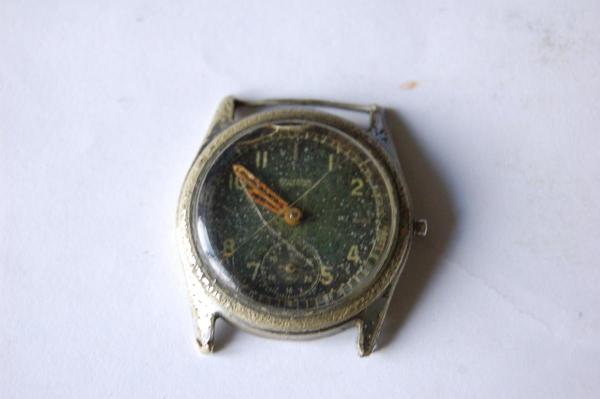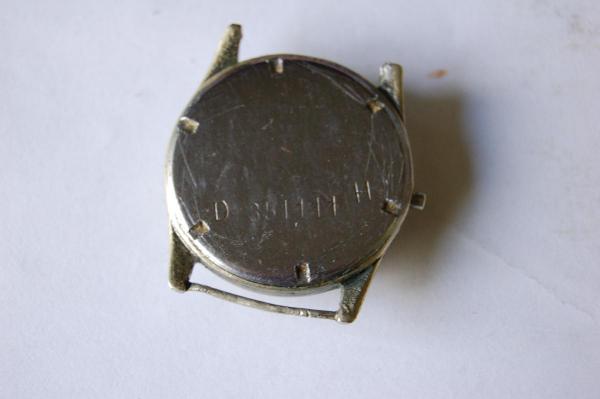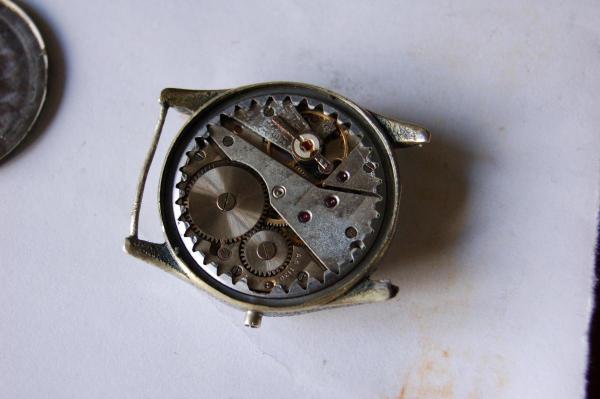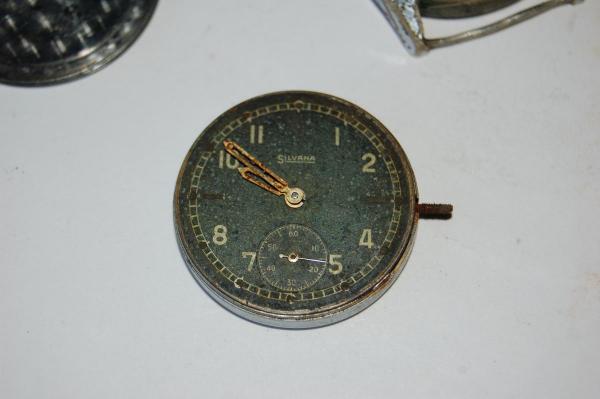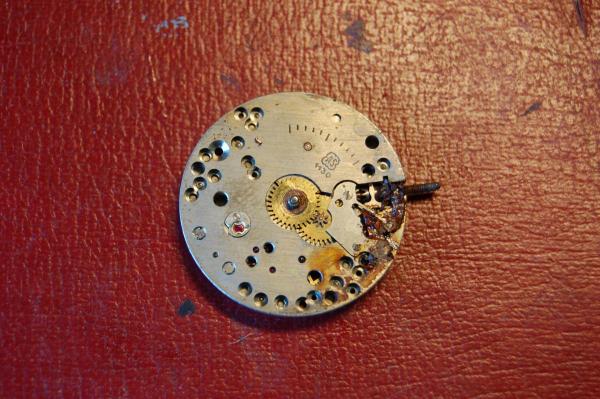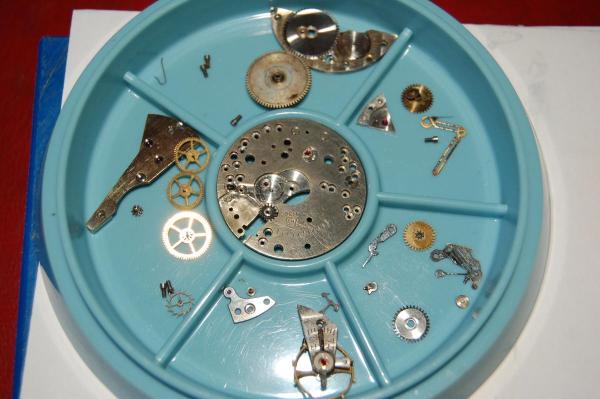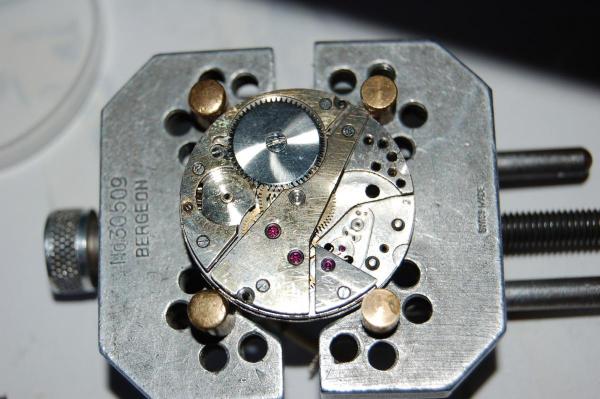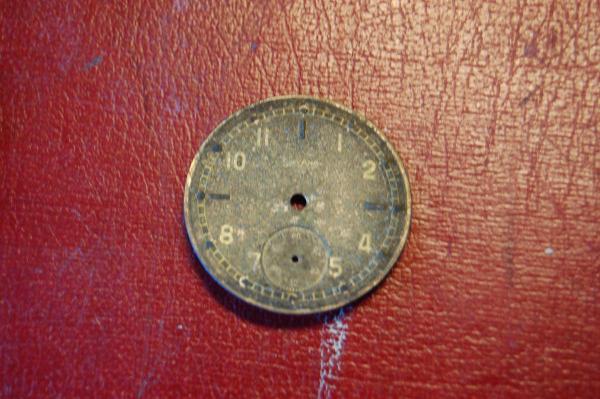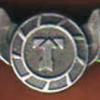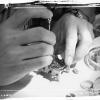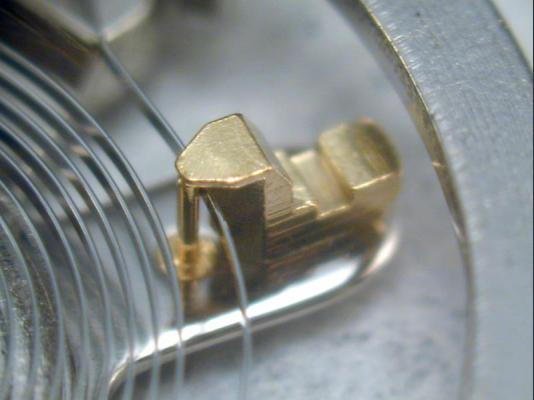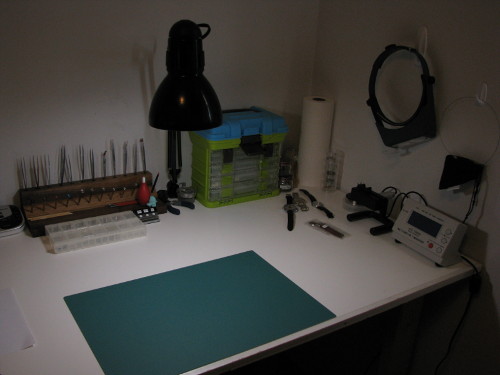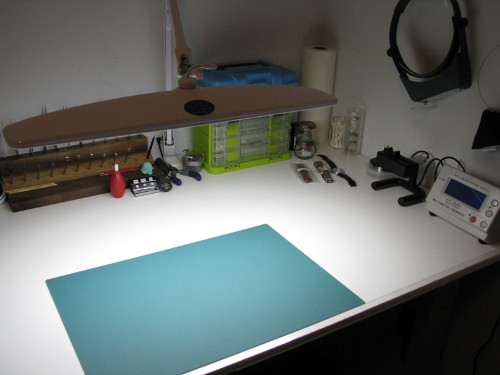Leaderboard
Popular Content
Showing content with the highest reputation on 07/23/15 in Posts
-
I stumbled across this and thought some of you would enjoy reading it. http://www.onthedash.com/docs/Project99.html3 points
-
Hey DJT2, I have looked into the reasons why we shake, and solutions to it ... yes I do investigate some weird things. The original reason for this investigation is that one of my pastimes is long distance shooting, where a steady aim is vital. Here's a pic of "Olde Painless" ... my Carbon Extreme II by Christensen Arms. There are so many things I have learned from lobbing lead 800+ metres that can be transferred to the art of watchmaking, and it's a hobby I highly recommend. This is going to be an in-depth look at the causes of this problem, and a few solutions. It's going to be a long post where we "go down deep and stay down long", and probably be boring for many members who don't have this problem ... but if you do have issues with a steady hand, then it will be well worth the read, because if you understand the problem you are better suited to tackle it. I am also going to send DrRock, our resident leechkeeper :P, a PM to peer review my post, and add in his words of wisdom to this thread. --------------------------------------------------- Ok, the reasons we shake are two fold, firstly are medical reasons ... if you sadly have a disease that affects the firing of the neurons in your brain, or loss of the myelin sheath insulating the nerves, this will cause tremors and shaking. If you have this problem you'll probably be aware of it, as your shaking and trembling will be almost constant throughout the day; even whilst doing no tasks at all. There are calmatives you can take to lesson this, but you'll need to see a quack for medical advise. The second is far more common, and by your description DJT2, is your problem. This is caused by overconcentration and hyper-alertness, making your brain send neuron impulses to multiple muscle groups, that often oppose one another, at the same time. As muscles are held in place by tendons, which are elastic in design: this "springiness" creates a to-and-fro action as each muscle group fights one another. Thus a shake occurs, which often becomes amplified the longer you are in that state of hyper-concentration; and disappears almost immediately you cease the task and relax ... sound familiar? This is something the Lord designed in us for our own protection ... we call it "fight or flight". When working on small difficult tasks you enter a state of hyper-awareness and focus, which is an identical state to that of being in danger, so your brain reacts to this emotion by placing you on a hair trigger to activate ANY/ALL muscle groups at a nanoseconds notice, to either defend from attack, or run away fast. All this is done unconsciously; because if it was a conscious process a few valuable seconds would be needed to evaluate and react to the situation, which is not in the best interest of saving your life. If any of you are avid hunters, you would have seen this same twitching in the leg muscles of animals if they are aware of your presence, and know they are in serious danger; but haven't located where you are. Unconscious processes do not look at the why and where; that is a conscious process, they only sense the state of emotion: so it doesn't matter that YOU know your just working on a watch, your emotional state is the same as if you are in danger. But the Lord in his wisdom has put another designed feature into our brain to control this "fight or flight" called the Amygdala. In short, the Amygdala is an emotional filter. It encodes, interprets, and most importantly STORES your emotional state. It learns from experience when to filter emotions and when not to ... just like you filter out a scent after a while so that you don't smell it, and you filter out noises so that you don't even hear them. Ever noticed how something unexpected at first will startle you, but after a short while that same occurrence doesn't ... that's your Amygdala doing it's job. This is why with practice, and most importantly confidence in the task you are doing, your shaking will subside and almost disappear ... and why it's so important on this forum to give people a sense of confidence, through praise, in their watchmaking accomplishments. Phew! That was a long explanation, but hopefully an insightful one that helps you understand why we shake when we are trying our hardest to be steady handed. Tips to help with shaking. Many of the tasks DJT2 is having difficulty with, I do freehand and without much effort; but that wasn't always the case. I too shook when oiling Incabloc Jewels etc... And until my Amygdala kicked in and controlled my emotional state I used what I learned from shooting: Anchor Points. Have as many Anchor Points as close to the "Action Point" as possible. In shooting the action point is the Stock, Buttpad and Trigger ... in watchmaking, its the tip of your oiler or tweezers. This is what Geo was talking about when he told you to use two hands to control your shaking. Use your off-hand as an Anchor Point for the working hand. Anchored your off-hand on as many points around the work as practical and comfortable: resting on the movement holder, working mat, anywhere that would provide a secure anchor. Then lean into this anchor with your working hand, as close to the Action Point as possible to create a stable base. What you are doing here is removing the elastic affect of your tendons, you still shake but it's not amplified into a to-and-fro action, it's absorbed by your off-hand. Next my friend, you need to relax. You are concentrating too much on the task. Try putting on an Audiobook to listen to, or something of interest besides what you are working on. This will take some of the focus off your work, and subconsciously lower your emotional state. Yes, you still need to be mindful of the task at hand, but if your shaking it's a sure sign that you are overly focused to the point where your brain is thinking, "Whoa! are we in mortal danger here?" Your focus needs to be just up to this point; but not into it ... flying just under the soundbarrier to avoid a sonic boom, so to speak :) I hope this has been edifying and not too boring a read for the members ... and I'll be very interested to hear DrRock's input.3 points
-
Found a Silvana DH on eBay the other day in some obscure ex Russian state,and as I've wanted a German ww2 military watch for some time I thought I would take a chance,it was listed as not working and from the pictures I could see it was without its crown, on arrival I had quite a job removing the case back,and by the look of the scratches others had tried too. I don't think it had been removed in a long time and when removed I was pleased to find the movement complete albeit very dirty,water had got in past the stem at some time and the dial was very dirty and moldy and the hands rusty, and the keyless work rusted solid, I stripped the watch down and all parts except keyless work were ok so set about cleaning.as I don't have a cleaning machine all was done by hand and I'm still learning as I go! In the areas on the bridges where the corrosion was worse the silver finish is worn away but that aside when reassembled the watch ran fine, I then set about the dial with much trepidation,but after a gentle start found the dial to be very sound so a little more time and effort got a good result. before.and after.now the watch is reassembled and running fine but still needs the case repaired and rechromed and some more pics taken so more to follow,but as this watch only cost £18 with £5 postage I think I've done ok.2 points
-
I thought this might be fun and helpful. I can speak for myself in that I have some trouble pronouncing some European languages correctly. This link was a help to me, hope it is for you too. :) http://www.chronometrie.com/watchsounds/watchsoundspage.htm2 points
-
Thanks guys for an interesting read. I've just enrolled on a jedi mind training course so in future I'll be able to use the force. Until then I'll stick to single malt & diazipam lol Sent from my GT-I9505 using Tapatalk2 points
-
Life has been extremely busy lately - hence my fleeting visits back here to WRT HQ. ;) But I still have it bookmarked as one of my regular check-in sites. Haven't had time to do a lot of horology lately, apart from changing a few batteries and adjusting a couple of watchbands. But I plan on making a bit more time in the next few weeks to take apart and - hopefully - put together again those practice movements that I got off eBay. A few others on here got them as well, if you recall. I hope the info I posted above may be useful not only to the original poster with the intention tremor, but to amyone else who may be having problems with the twitchy fingers... ;)2 points
-
See what happens? You rub the magic lantern and Dr Rock appears...! :) Tremor, as we call it (a.k.a. The Shakes), has multiple causes, as you allude to in your post, Lawson. And you're quite correct that some are due to pathological processes while others aren't. The main worries are tremors caused by a disease process (eg Parkinsons, and many other neurological disorders, hyperthyroidism, and several others). They need to be seen to and fixed where possible or at least controlled. And of course, in the worst cases, when the tremor CAN'T be controlled, then the decision has to be made about giving up the delicate work. But for all the other tremors, there are several considerations. First - some people have a hereditary condition known as Benign Familial Tremor - I have a surgeon colleague who has this quite markedly - yet, I'd let him operate on me. He deals with it by timing his deliberate movements to coincide with the tremor - it took years of practice, but he does some amazing fine surgical work and is also a very fast operator due to the speed of his movements. Assuming you don't have that condition, though, the main problem for most people is twofold - either a systemic problem (eg too much caffeine - tea, coffee, cola drinks, energy drinks, etc) or a problem known in the medico trade as an intention tremor. Intention tremor is similar to what was described by the original poster - the closer you get to the target point of your movement, the worse the tremor gets. Various things can be done to control this, including relaxation techniques (the whole breathe out thing that snipers use), take drugs such as certain types of beta blockers (one of the oldest is still one of the best - propranolol, trade name "Inderal"). This has been the mainstay of various professional musicians and performers for decades, and you'll need a prescription to get them, but they do work very well with minimal side effects as long as you tell the quack what you need them for, and that he/she checks any other conditions you may have, other medications etc. Also, mild calmatives such as diazepam in very small doses can work wonders (diazepam - "Valium" - but they no longer make the original Valium brand, but plenty of generics available). Again, get a prescription from your friendly quack for these. And I stress - TINY doses. (eg 2.5mg in the morning - that's half a 5mg tablet). One thing that we surgeons learn when doing extremely delicate work, especially when magnified by high-power loupes or a microscope, when every movement is magnified and looks like an earthquake, is to use the same technique that signwriters and artists may use. Place something (either another instrument, or for watch work, perhaps a small toothpick) held in your non-dominant hand with its tip down on the work somewhere very close to where you will be working (eg next to the screw hole). Gently brace that against the work, held between two fingers and thumb of the non-dominant hand. THEN gently rest your screwdriver, forceps, or whatever you're using as a tool, against the lower end of that sloping stick to steady the tip. If you've seen signwriters using those, a stick in one hand with a rubber ball on the end of it, then resting their hand or paint brush against the stick close to the sign they're writing, you'll get the idea. I think signwriters (and other artists) call it a mahl stick, or a maul stick. Watchmakers (and surgeons) can use exactly the same principle. The use of a toothpick or whatever, tip placed close to the point of action and instrument gently laid on it, would fit with Lawson's "Anchor point" principle. And remember - cut out the caffeine. There's more in a cup of tea than you may think. And while not wanting to rain on the parade of having a quickie drink, alcohol can actually make a tremor worse. I do some very delicate surgery, and I don't drink alcohol at all, I have one cup of decaf coffee in the morning (maybe) and no other caffeine at all. No tea, no real coffee, no Coke, and certainly none of those energy drinks. I also am very relaxed and confident in what I do, which helps the steady hands. But as we get older, the unwanted tremor - which goes by the ironic name of "essential tremor" - gradually can creep in. In that case, the propranolol, the diazepam, etc can help, along with the use of an improvised maul stick. Hope that helps :)2 points
-
I went to the clock & watch fair at the Motorcycle Museum in Solihull on 12/7 and enjoyed an extended walk around. My impressions are that some of the stall holders had lost touch with reality on their pricing. I would have thought that they would of at least matched the prices on the Bay but I found only two watch stalls where the pricing was what could be described,in my opinion, as fair. One guy was trying to sell 3 accutron 218x movements for £25.00 each but could not say whether the coils were working or not and on one the battery strap and screw with insulator were gone. He confessed he did not know much about them but thought the price was fair for parts. I passed on that one, the coils were a big question for me and I would have needed to test them plus whether the fork was still magnetic and again the index wheel and pawl fingers would need inspection with a scope - too many ifs and buts and not enough guarantee for a £75.00 shot to nothing, if he had wanted £35 for the three I may have had a punt. Another had a spaceview conversion (poorly defined chapter markings on glass) for which he wanted £300 and guess what, it was not working ! I did see a nice Favre Leuba (twin barrel) and 9ct gold Marvin but resisted. It looked like I was just going to leave empty handed but saw one stall with two big piles of watches and asked the guy how he came by them and they were apparently from an auction. They appeared to be so called designer watches mainly quartz but he said there were wind up watches in the lot. The price being £10.00 a watch. I scoured around looking for old leather straps first then screw on backs and older styled crowns but was finding nothing of great interest. Finally I found a watch that ticked the boxes, old smelly leather strap, dirty case, dome head crown and screw back. The case is filthy but no dings or deep scratches. The glass is a mess and cracked but the dial appears ok so I asked for his best price and he said £8.00 so I got it. Really I just wanted to get something I suppose. Not an astounding watch but really clean inside though the movement looks a bit mass produced. The pic makes the screw heads look a bit chewed but that is just the shading / lighting as they are all untouched and I doubt whether the back has been off. It is working and the date moves over without problem. I had hoped it would be a Bulova Caravelle but now have doubts though the Accutron Back remover (L) fits perfectly. The gasket is still sound and I like the Crown. It will go in the queue for total clean and service. If anyone recognises the actual movement it would be nice to know. The glass may be a problem but as I am taking it off anyway I should be able to size it, quite a high dome with a magnifyer looking like it is stuck on the underside. Cheers, Vic1 point
-
Looks like it is very clean inside the movement . It could very well run good even if it needs to be serviced . What you should look for is if there is any oil in the jewels or they have dried up . Dial is probably from a loose movement . In this case maybe a crystal that isn't perfectly installed ?1 point
-
Hey Don, I agree with Colin and Geo, this is not a complete set of punches. Be patient my friend, a complete set in good condition will come up for sale ... but when it does mate, be sure to pull the trigger on it, as they don't stay up for sale long. Took me about 7 months to find mine, and it came up at the most inconvenient time ... right when I'd saved enough money to buy a Horia 7750-53 Movement holder :rolleyes: so typical. Just as a reference image, this is what you are looking for Don.1 point
-
Round nosed pliers and an old pair of tweezers always worked for me just be careful don't expect too much at the first attempt you have to gradually manipulate the spring to fit the arbour.1 point
-
You'll get there Roger, it was always going to be a 50/50 shot re-setting the end curl. On old blue springs I draw the temper just at the end before re-shaping. I'm not too sure how modern spring material would have respond to that treatment.1 point
-
1 point
-
I think, on the whole, I'm with Geo on this one. I think it's perfectly acceptable to polish up and refinish a watch case with no actual historical value. WW1 and WW2 watches, in my opinion, have a story to tell - which is written in their physical condition, as it were, and I've never messed with mine. "Messed`' would be the word that would describe my efforts!1 point
-
Thanks to the both of you, Lawson & Dr Rock, for taking the time to write these very informative in depth posts, it's greatly appreciated! :) Good to here from you again Doc, I hope your cronic case of horology is responding well to WRT treatment. ;)1 point
-
Haven't had much success bending the ends. They usually bend at only one point so you end up with a distinct bend, this creates a stress point and I bet it will break at this point sometime in the future. If you can support the inner coil securely, try rolling on the inside of the coil with a small rod.. this usually tends to close up the metal (think english wheel). I would just call Cousins and see what they say... they seem to be pretty efficient and you photograph shows quite clearly that the part will not fit. Anil1 point
-
I'd like to share with you this unique clock which was on my work bench couple of years ago. Here's some photos and a video clip to show how it works. At the middle of the wood case is the keyhole. Pendulum is at the back Under the case is the power reserve system The wheel train of the clock https://vimeo.com/134053992 The steel ball drops into the slide and rolls down into the cup which is brought up to the top by controlled release of power from the bottom case. Then into a spacer at the top of the clock. I've no idea where this clock is made in as it's not stated anywhere on the clock? Could it be London as indicate by it's name? Sent from my iPad using Tapatalk1 point
-
1 point
-
You beat me too it Geo, except I learnt to pause between exhaling and inhaling and that was the moment to release the trigger. It can still be relevant in watchmaking as it provides a very predictable, and very still moment of equilibrium in the body's poise; ideal for a very light and controlled touch on a hair spring for instance.1 point
-
Hi Nige, you've done exceedingly well to get it running and looking as good as it is. I would never have believed you could have salvaged the dial, what method did you use to clean it? The case is going to be a bit of a challenge too. You will have to silver solder a new bar in place before plating. I'm keen to see the finished result. I hope our oracle Will chimes in with some history information.1 point
-
1 point
-
I must say it is a refreshing change, i know certain forums do go over the top with the whole rep market, like i said its how i got into taking movemnts apart and fixing myself. Ok hair springs still test me and i have to say i have murdered countless numbers of the buggers. Im a seiko man myself now mainly because they're e so numerous and easy to pick up on the bay, ive restored a few of which i shall post my walk throughs of a couple of restoration projects that i have done. Looking forward to adding this forum to the many others from the watch world that i participate in. Hopefully i can be of some help to others .1 point
-
Lovely piece, Thanks for the pics. Vic1 point
-
Hello Wingman and welcome to the forum, My only longstanding advice is to take pics before you remove each bit, I am of course referring to watch disassembly not clothing etc. Cheers, Vic1 point
-
I remember watching the George Daniels interviews, and George lost a screw on a job he was working on, and it turned up a few weeks later under his fingernail lol1 point
-
I have lost and found several springs but the best and more dramatic was one date jumper spring from an AS2066. While I was stripping down the movement, I heard this awful sound (tsaf!!!) then the spring lost!!! Down on my knees for a whole 30 minutes and keep looking on the floor with no results! Anyway I stood up to continue with the disassembly of the movement and suddenly realised that my free eye (the one without the loupe) was irritating me! I could not believe that the little spring had landed into my eye and after a while was moving inside my eye!!! I went to the bathroom and started to wash off my eyes with plenty of water in order to ease the pain or maybe to free the spring from my eye. The pain was getting worse so I called my friend to take me to the hospital. I explained the situation to the doctor and after the proper examination he concluded that the thing (the assumed spring by me) could not be found in the eye. He told me that the pain and irittation was still there due to the initial injury. Anyway, after getting the prescription for my eye, we got back home and guess what: I found the **BLEEP** spring laying on the edge of the washbasin!!!1 point
-
Sooo....It came...and it's awesome. It did indeed come with an U.S. compatible transformer. There are pictures of several different plug types on the box so I guess they just localize it for wherever they are selling it. Here is a before and after. My humble workspace: The first pic is my old lamp. A 15 w CFL Ott lite (about as bright as a 60w incandescent) And here is the new lamp I kept the shutter speed, ISO and aperture the same on the camera for both photos The light coverage is amazing and I don't think the picture does it justice. Haven't done any work under it yet but just pulled out a few movements to look at and it is a huge difference. So again, the link is: http://www.amazon.com/dp/B00M0X1Y6Y Hope they are ready for a rush :)1 point



